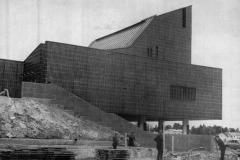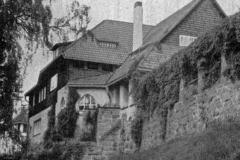Discovering another Modernism in Hungary
Text: Dániel Laczó
Modernist Architecure spread in Hungary on two occasions in the decade after World War II. Firstly, right after the war when state-sponsored projects wre predominantly followed Modernism. The change of the political system and the rule of socialism resulted the transformation of cultural policy: dictatorship defined art life and required authors and artists to apply social realism in their representations. As a result of the slow reconciliation in both politics and art following Stalin’s death, Hungarian architecture gradually found its way back to Modernism. After the revolution and fight for freedom in 1956, Modernism was explored in line with western typologies. The prehistory of Modernism was seen as a result of Art Nouveau, which was regarded as the golden era in the literature of art history, whilst theoreticians explored an unbridgeable break of architectural ideas at the dawn of Modernism. Beyond our common past with the Finns, Hungarian theoreticians soon identified the universal significance of Finnish architecture and also expressed the tradition of this other type of Modernism for Hungarian architecture as an alternative of international Modernism.


